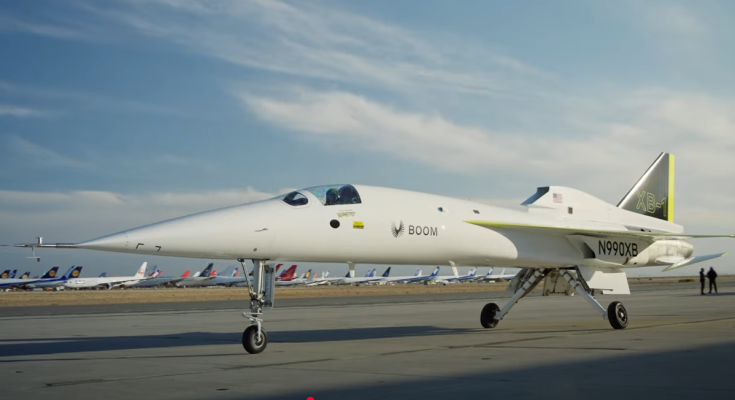Boom Technology made aviation history with the successful test flight of its XB-1 supersonic demonstrator, an event that has brought the aviation world one step closer to the revival of supersonic commercial travel. The XB-1, often referred to as the “Baby Boom,” is a cutting-edge prototype that aims to pave the way for a new generation of supersonic passenger planes. With this landmark achievement, Boom has demonstrated not just technical prowess but also a visionary step toward reshaping the future of air travel.
The XB-1 is a smaller, scaled-down version of Boom’s planned Overture jet, a supersonic airliner designed to carry passengers at speeds exceeding Mach 2, more than twice the speed of sound. This flight represents a critical milestone in Boom’s journey, as the XB-1 is designed to showcase key technologies that will be crucial for the development of Overture. The XB-1’s flight demonstrated not only supersonic speed but also its cutting-edge materials, design, and aerodynamics, which will be integral to making commercial supersonic flights viable once again.
The XB-1 is the first civilian aircraft to achieve supersonic flight in decades, following the retirement of the Concorde in 2003, which was the last supersonic commercial passenger jet. The XB-1 is designed to reach speeds of Mach 1.3, about 1,000 miles per hour, enabling it to cut flight times in half compared to traditional subsonic airliners. For example, a flight from New York to London could be completed in just under three and a half hours, drastically reducing travel time across the globe.
The key to the XB-1’s success is its innovative design and advanced technology. Built with a lightweight carbon fiber composite structure, the aircraft maximizes performance while minimizing fuel consumption. It is also equipped with cutting-edge engines designed by a leading aerospace company, capable of producing the power necessary for supersonic speeds while remaining efficient and relatively environmentally friendly.
One of the biggest challenges facing supersonic flight has always been the issue of sonic booms—the loud and potentially damaging noise produced when an aircraft exceeds the speed of sound. The XB-1, however, incorporates technology that reduces the intensity of the sonic boom, making it more manageable. This technology is crucial for the commercial viability of supersonic airliners, as noise regulations in populated areas have historically made supersonic flight over land a challenge. Boom’s engineers have worked meticulously to ensure the XB-1 can fly at supersonic speeds without violating noise regulations, a major step toward the future success of Overture.
Boom’s vision is to make supersonic travel available to a wider range of passengers, not just the wealthy elite. While the Overture jet is expected to have a premium price tag, the company’s long-term goal is to reduce the cost of supersonic travel, eventually making it accessible to more people, and opening up the possibility of faster, more efficient travel for everyone.
The success of the XB-1 test flight represents the culmination of years of research, development, and testing. It also signals the growing interest in reviving supersonic flight, with other companies such as NASA and commercial competitors also working on similar projects. However, Boom’s focus on environmental sustainability, speed, and passenger comfort gives it a unique edge in the race to make supersonic travel a reality.
As Boom continues to refine the XB-1 and prepare for the development of Overture, aviation history has been made, and the future of flight seems faster and more exciting than ever before.



